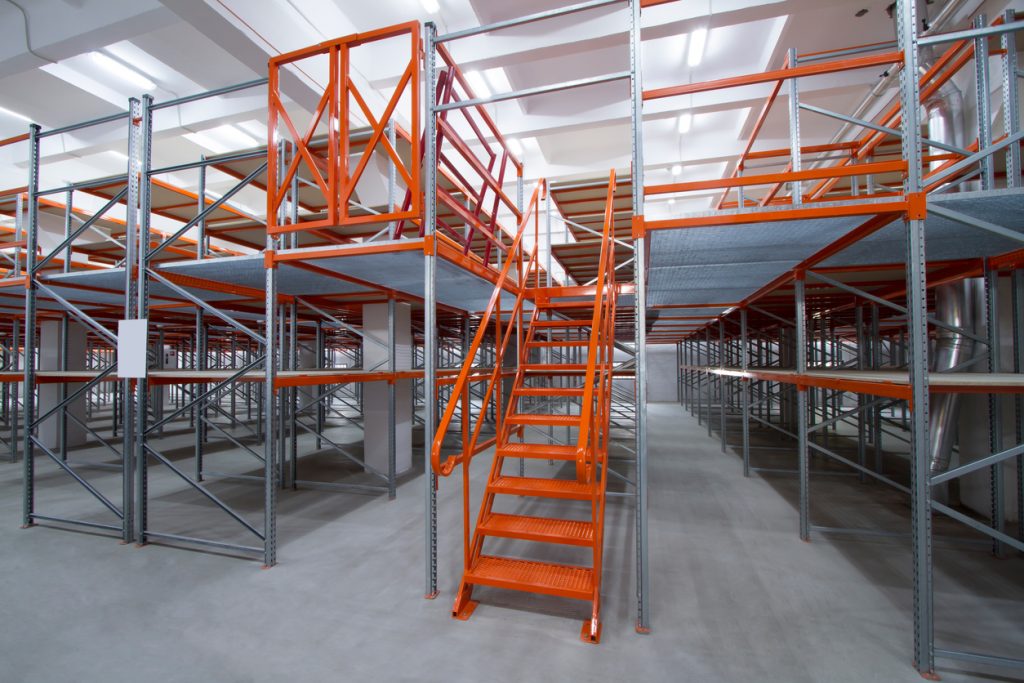Blog
What is a Mezzanine?
What is a mezzanine? It depends on who you ask.
In classic French architecture, a mezzanine – or “entresol” – was a room created by a partition that didn’t extend all the way to the ceiling. You might find them if you toured the Palace of Versailles.
More generally speaking, a mezzanine is an intermediate floor that is open to a double-height ceilinged floor just below it. It’s also become a catch-all term for any level above the ground floor.
But in the industrial world, this term refers to something specific: Typically free-standing metal structures installed in spaces with high ceilings, such as warehouses. Usually made from steel, they are designed to be assembled on site and dismantled and moved as needed.
What is a mezzanine’s main benefit?
The most obvious benefit of adding a mezzanine to your warehouse is the ability to add more storage space without having to expand, allowing you to add a second or even third level to the interior of your warehouse.
Storage space is crucial no matter what industry you work in, and a mezzanine is the simplest way to add accessible storage while making sure your warehouse layout remains the same.
But that isn’t the only benefit. Before mezzanines came along, companies that ran out of storage space in their warehouses would need to relocate or build new space.
The cost of installing a mezzanine is nothing compared to that of purchasing new property or constructing a new building. And in addition to giving you more storage, a mezzanine helps you free up floor space for other needs.
What should I know about installing a mezzanine?
As with any change you make to your warehouse, installing a mezzanine requires some planning. Before you install:
- Get permission. Your local planning or zoning board might need to grant permission before you can build. If you’re renting your warehouse space, make sure the mezzanine meets the terms of your lease.
- Make sure you have enough headroom on the ground and the mezzanine level.
- Find out whether the warehouse floor has the necessary capacity. If the floor slab doesn’t support a mezzanine, you’ll need to install special footings.
- Check with your local code enforcement office regarding safety features. Mezzanines used purely for storage – and thus not accessible to the public – will have a different set of codes.
- Figure out your budget. Size, type of flooring and other factors can affect what you’ll spend, but a mezzanine can save you in the long run through efficiency and added storage.
Cogan mezzanines from Greystone equipment
Are you ready to install a mezzanine in your warehouse? Greystone Equipment can help. We provide a variety of Cogan warehouse mezzanines that can be used for a wide range of applications.
These mezzanines can be custom-engineered to meet your unique storage needs, transforming wasted vertical spaces into valuable storage areas. We can customize their products to meet your facility’s precise area, height and weight requirements and install them for you as well.
Contact us today to get started on saving space at your warehouse.

